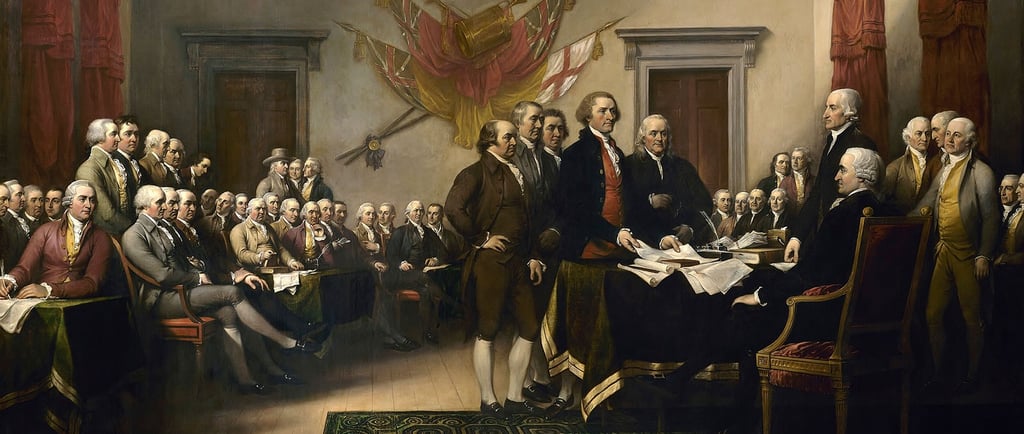Why Gold and Silver Were Essential as Real Money for Our Founding Fathers
EDUCATION ON GOLD & SILVER


Historical Context and Philosophical Foundations
The founding fathers' decision to use gold and silver as primary forms of money was deeply rooted in the historical and philosophical milieu of the 18th century. The economic landscape during that era was characterized by a pervasive distrust of paper money, a sentiment born out of bitter experiences with its inflationary tendencies and the devaluation of currencies. Notably, the Continental Congress's issuance of paper money during the Revolutionary War had led to rampant inflation, eroding public confidence in fiat currencies. This historical backdrop significantly influenced the founding fathers' preference for gold and silver, which were perceived as stable and reliable stores of value.
Philosophically, the founding fathers were greatly influenced by classical economic theories and Enlightenment principles. Adam Smith's seminal work, "The Wealth of Nations," published in 1776, argued for the importance of tangible assets, such as gold and silver, which he believed were essential for a stable economic system. Smith's ideas resonated with the founding fathers, who sought to create a monetary system that would ensure long-term economic stability and growth.
Moreover, the Enlightenment ideals that dominated the intellectual climate of the time emphasized rationality, trust, and empirical evidence. These principles underscored the necessity of a currency that was not only tangible but also universally trusted. Gold and silver, with their intrinsic value and historical acceptance as mediums of exchange, fit these criteria perfectly. The founding fathers recognized that a stable and trustworthy monetary system was crucial for the fledgling nation’s economic prosperity and social cohesion.
Thus, the historical context of economic instability caused by paper money and the philosophical influence of classical economics and Enlightenment rationality converged to shape the founding fathers' endorsement of gold and silver as real money. Their commitment to these precious metals was a deliberate effort to establish a robust and enduring economic foundation for the United States.
Economic Stability and Trust
Gold and silver have long been recognized for their intrinsic value, which stems from their scarcity and historical use as a medium of exchange. These precious metals provided a foundation for economic stability that was crucial for the Founding Fathers. Their intrinsic value meant that they were not subject to the whims of government policy or economic cycles, fostering a sense of trust among the populace. In times of uncertainty, gold and silver retained their value, ensuring that wealth could be preserved over the long term.
The scarcity of gold and silver further contributed to their role in stabilizing the economy. Unlike fiat currencies, which can be printed at will, the supply of these metals is naturally limited. This scarcity prevents runaway inflation, a phenomenon that occurs when there is an excessive increase in the money supply. For the Founding Fathers, the arbitrary expansion of currency was a significant concern. They understood that without a stable form of money, the economy could be subjected to severe fluctuations and crises.
Historical examples from other countries and periods illustrate the dangers of relying on fiat currencies. The hyperinflation experienced in Weimar Germany during the 1920s is a stark reminder of what can happen when the money supply is expanded without restraint. Citizens lost trust in their currency as its value plummeted, leading to economic chaos and social upheaval. Similarly, more recent economic crises in countries like Zimbabwe and Venezuela underscore the importance of a stable, trusted form of money.
By anchoring their monetary system in gold and silver, the Founding Fathers aimed to protect against these risks. The use of these metals ensured that the money supply could not be easily manipulated, thus preserving economic stability and fostering trust among the people. This approach provided a robust defense against inflation and helped maintain the long-term value of their currency, laying the groundwork for a stable and prosperous economy.
Constitutional and Legal Framework
The founding fathers of the United States were meticulous in establishing a constitutional and legal framework that would ensure the use of gold and silver as real money. Central to this framework is Article I, Section 10 of the U.S. Constitution, which explicitly prohibits states from making "anything but gold and silver coin a tender in payment of debts." This clause reflects a deliberate effort to prevent states from issuing their own paper currency, thereby promoting a stable and uniform monetary system based on precious metals.
During the Constitutional Convention, extensive debates and deliberations underscored the importance of a sound monetary system. Delegates were acutely aware of the economic instability and rampant inflation caused by the over-issuance of paper money during the Revolutionary War. Consequently, they sought to create a robust monetary foundation that would safeguard individual property rights and promote economic liberty. The consensus was that gold and silver coins, with their intrinsic value, would serve as a reliable medium of exchange and store of value.
The use of gold and silver as real money was further intended to curtail governmental overreach and protect citizens from arbitrary fiscal policies. By anchoring the nation's currency to precious metals, the framers aimed to limit the potential for inflation and ensure that the purchasing power of money remained consistent over time. This monetary stability was seen as essential for fostering trust and confidence in the new nation's economic system, encouraging investment, and facilitating commerce.
In addition to constitutional provisions, various legal measures were enacted to uphold the use of gold and silver as money. These included laws that defined the weight and purity of coins, established mints for coinage, and regulated the circulation of foreign coins. Together, these measures formed a comprehensive legal framework that reinforced the principles of sound money and economic freedom envisioned by the founding fathers.
